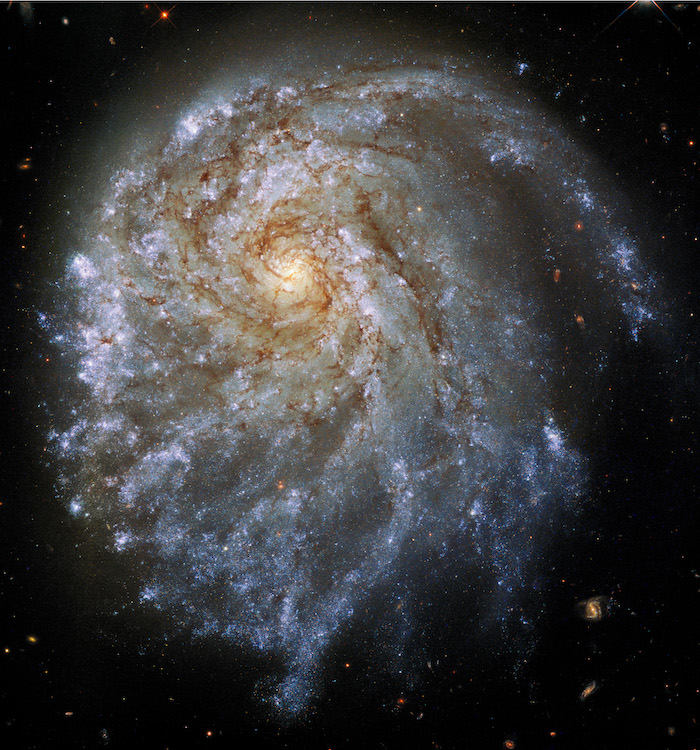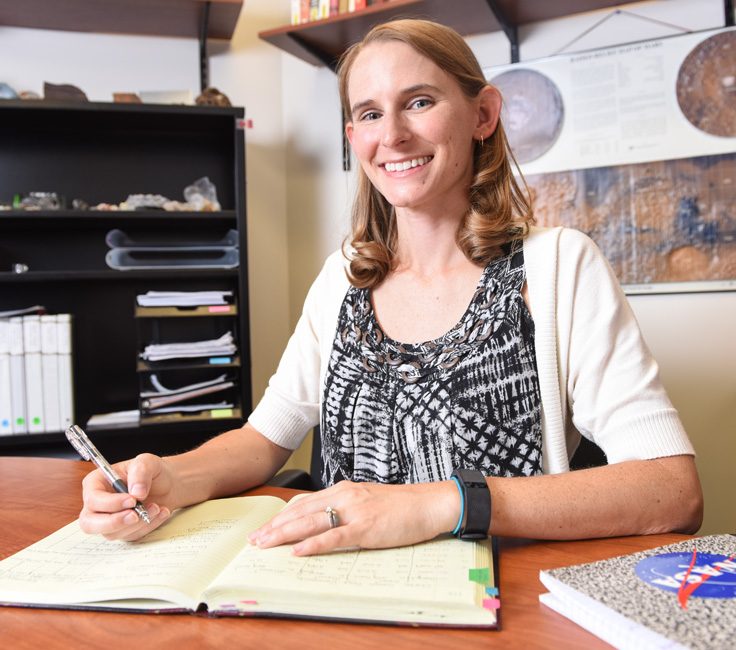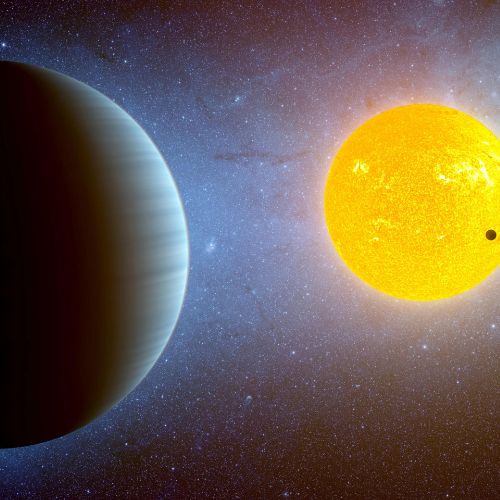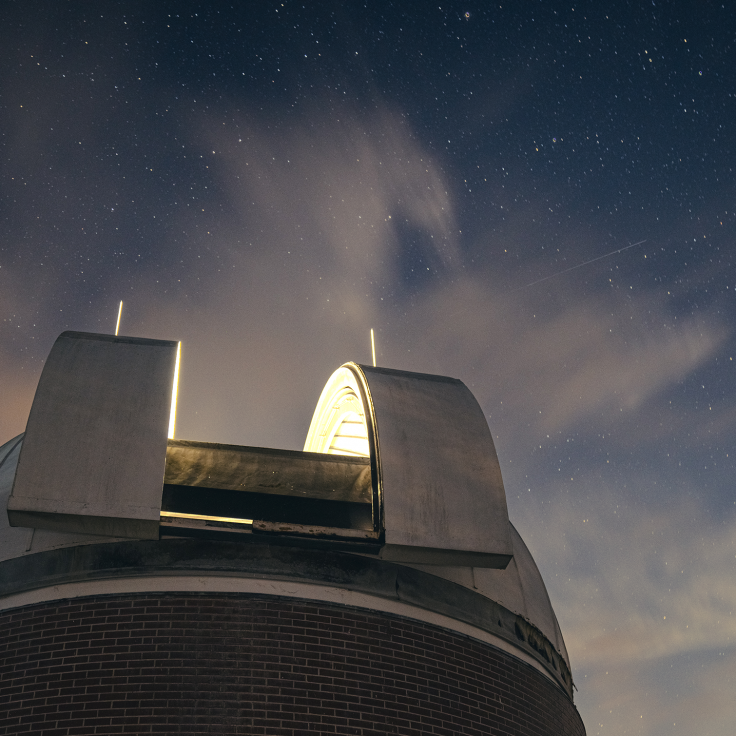
What is Deforming This Spiral Galaxy?
With the Hubble Space Telescope, a UF astronomer examined a galaxy pressed out of shape
A spiral galaxy 120 million light-years away is looking a bit cockeyed.
Usually, galaxies have a cluster of aging stars in the dead center, surrounded by a fairly symmetrical disk of stars. But the NGC 2276 galaxy, found in the northern constellation Cepheus, was recently photographed with a lopsided form by the Hubble Space Telescope.

Paul Sell, lecturer in the Department of Astronomy, leads the Hubble observation program that captured this unusual snapshot. The galaxy in the picture, he said, is likely under a bit of pressure: NGC 2276 is being compressed by gas as it plows through the space separating it from other galaxies.
“It’s almost like a boat in a wake,” Sell said. “As the galaxy tears through space, gases are pushing back up against it.”
This compression also causes young, bright blue stars to quickly form on the galaxy’s leading side, as seen in the upper left of the photo.
Something else may also play a role in the galaxy’s form: its neighbor. The gravitational pull of the nearby NGC 2300 red galaxy could be tugging NGC 2276 out of shape.
While the shape of the galaxy makes for an eye-catching photo, Sell and his collaborators are more interested in links between the asymmetric formation of stars across the galaxy and the “stellar graveyard” of objects created when massive stars explode.
The images from the Hubble Space Telescope offer extreme sensitivity and crispness, allowing the researchers to look at individual bright stars and the links between populations of stars.
“These snapshots help us piece together the story of how stars evolve over cosmic time, under certain conditions,” Sell said. “Now we have to dig into the science and see what we find.”
Sell works on the Hubble observation project with collaborators from the University of Crete/FORTH in Greece, INAF-Brera in Italy, and the Center for Astrophysics | Harvard & Smithsonian in the United States.
Take a look at the NGC 2276 galaxy’s place in the universe in the video below:


